Ranganathaswamy Temple: One of the largest religious complexes in the world, Ranganathaswamy temple is also known as the ‘Srirangam Temple’. Built in Dravidian style and dedicated to god Vishnu, it was a prime centre during the ‘Bhakti movement’. It was also an economic and charitable institution, which is evident from its various inscriptions.
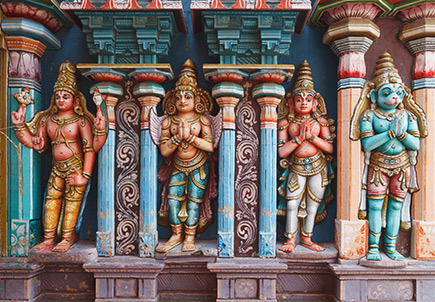
Sculptures and artwork on Gopurams and Mandapams are a must-see here. The temple complex with around 50 shrines is located in Srirangam, which is around 10 kms from one of the oldest inhabited cities of India- Trichy.
Jambukeswarar Temple: Located near to Ranganathaswamy, this 800-year-old temple is dedicated to Hindu god Shiva.
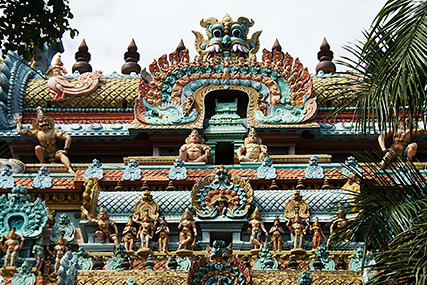
The temple has five enclosures and its architecture is the main pull here. Its sanctum has an underground stream, which keeps the water body here filled naturally. One can also find inscriptions from the Chola period inside the temple.
THE CHOLAS
The rule of Cholas can be traced between 3rd century BCE and 13th century C.E. One of the longest-ruling dynasties of the world, Cholas expanded their kingdom from Tamil Nadu to Sri Lanka and the Maldives. It also included some parts of Andhra Pradesh.
They were the patrons of Tamil literature and enthusiastic builders, whose zeal in art and architecture reflects not only in structures but bronze sculptures as well. The art of casting bronze using lost wax technique as practised today was highly patronized during their reign. It was in their period, the art, religion and literature reached new heights in their entire kingdom. Temples were not only spiritual centres but also served as centres for economic and social gatherings. While Tanjore was the initial capital of Chola kingdom, Gangaikondacholapuram was the new capital during Rajendra I’s period, which is also known as the ‘Golden age of Chola Kingdom’.
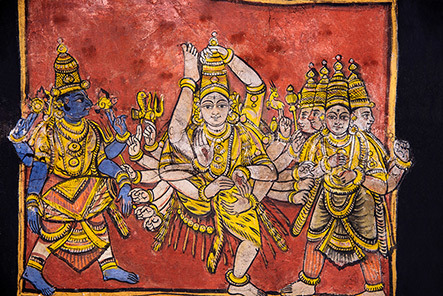
This period saw commissioning of many temples of architectural value. Their delicate workmanship was so much appreciated that once historian architecture, James Fergusson said,’’ The Chola artists conceived like giants and finished like jewellers.’’
Across the banks of Kaveri River, Cholas built many Shiva temples in Dravidian style of architecture. Carved temple walls, a deity in the Sanctum Sanctorum, miniature figures of Gods and Goddesses and Vimanas are the most commonly found features in any Chola temple. Among the many temples built by the Cholas, we are highlighting here
‘Great Living Chola Temples’, which are together designated as UNESCO World Heritage Site:
Airavatesvara Temple: The temple got its name from the white elephant named Airavata, mount of Hindu lord Indra. Built in around 1150 AD, it is the last of the three listed temples, and for that reason, it is more refined comparatively. What we see today is just a part of the temple, which once had a larger structure comprising seven courtyards, numerous gopurams, and shrines.
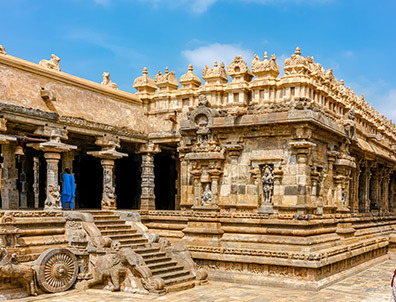
Even with just one courtyard and much of its area in ruins, the temple attracts a large number of devotees and tourists. The delicate work on carved pillars, chariots drawn by horses carved out of stone and steps made of granite stones, leaves the visitors spellbound.
Insider tip: Airavatesvara temple is located in Darasuram which lies very close to Kumbakonam. Here one can visit the craftsmen working on Bronze sculptures. One can also explore and experience the village life style here.
Brihadeeswarar Temple:

Built between 1003 and 1010 CE, this Hindu temple dedicated to Lord Shiva is the finest example of Tamil architecture. It is one of the largest temples that also boast of one of the tallest temple towers in Southern India. On its interior walls, one can find fresco murals.
The temple famous for its finest sculptures, largest shiva lingams, and a huge monolithic Nandi statue (vehicle mount of lord Shiva) is an architectural marvel believed to have been chiselled out of 60,000 tonnes of granite, which was quarried 50 kms away and transported by bullock carts and elephants to the temple site. The temple is credited with the origin of one of the classical dance form of India ‘Bharatnatyam’, in the early 19th century.
Insider tip: Airavatesvara temple is located in Darasuram which lies very close to Kumbakonam. Here one can visit the craftsmen working on Bronze sculptures. One can also explore and experience the village life style here.
 Gangaikondacholapuram temple:
Gangaikondacholapuram temple:
Located approx. 70 kms from Tanjore, Gangaikondacholapuram temple was built in 1035 A.D. on the same lines as that of Brihadeeswarar Temple in Tanjore. Along with Shaivism, the temple also follows Vaishnavism and Shaktism, which is evident by various structures of respective sects lying within the temple premises. While it has similarities with Tanjore temple, it is famous for its bronze artwork.
Explore this masterpiece in stone, in this short video.
India has a very extensive rich history which has witnessed the rise and fall of various glorious dynasties. The incredible land has many such royal stories waiting to be explored. Come and experience these historic trails with us! We, at
Indo Asia Tours, are all about the handcrafted tours, memories, and moments you take out of your trip, and believe us, this escapade will be a life-changing one!

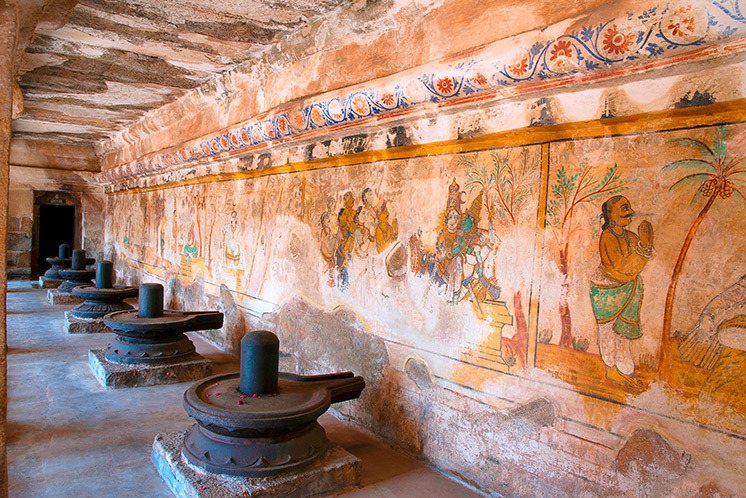
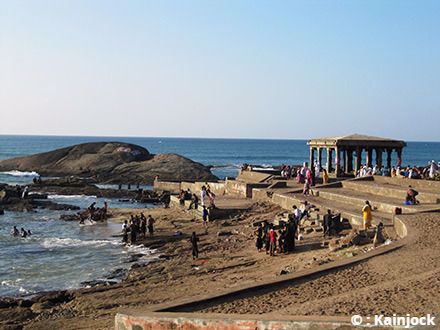 Also known as Kumari Amman Temple, this 3000-year-old temple in Kanyakumari has an admirable architecture. A visit to Kanyakumari, lying on the shores of the sea on the southern-most tip of India, also gives one a chance to visit Vivekananda Rock Memorial and Gandhi Mandapam.
Also known as Kumari Amman Temple, this 3000-year-old temple in Kanyakumari has an admirable architecture. A visit to Kanyakumari, lying on the shores of the sea on the southern-most tip of India, also gives one a chance to visit Vivekananda Rock Memorial and Gandhi Mandapam.
 The temple built in rock-cut architecture dates back to 8th -9th century CE. The rock relief has around 150 sculptures, which include images of Jain Tirthankaras and Jain religious women.
The temple built in rock-cut architecture dates back to 8th -9th century CE. The rock relief has around 150 sculptures, which include images of Jain Tirthankaras and Jain religious women.
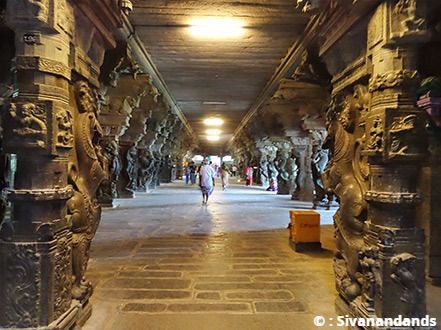 The most admirable architectural aspect of the temple is its Mani Mandapam, which has 02 huge pillars carved out of a single stone. Each of the two pillars is further carved to form 48 sub pillars each, which produce musical notes on striking them.
The most admirable architectural aspect of the temple is its Mani Mandapam, which has 02 huge pillars carved out of a single stone. Each of the two pillars is further carved to form 48 sub pillars each, which produce musical notes on striking them.
 Lying on the banks of Vaigai River, the temple is dedicated to Goddess Meenakshi (incarnation of Goddess Parvati) and her consort Lord Shiva. The complex has many shrines and mandapams.
Lying on the banks of Vaigai River, the temple is dedicated to Goddess Meenakshi (incarnation of Goddess Parvati) and her consort Lord Shiva. The complex has many shrines and mandapams.
 Sculptures and artwork on Gopurams and Mandapams are a must-see here. The temple complex with around 50 shrines is located in Srirangam, which is around 10 kms from one of the oldest inhabited cities of India- Trichy.
Sculptures and artwork on Gopurams and Mandapams are a must-see here. The temple complex with around 50 shrines is located in Srirangam, which is around 10 kms from one of the oldest inhabited cities of India- Trichy.
 The temple has five enclosures and its architecture is the main pull here. Its sanctum has an underground stream, which keeps the water body here filled naturally. One can also find inscriptions from the Chola period inside the temple.
The temple has five enclosures and its architecture is the main pull here. Its sanctum has an underground stream, which keeps the water body here filled naturally. One can also find inscriptions from the Chola period inside the temple.
 This period saw commissioning of many temples of architectural value. Their delicate workmanship was so much appreciated that once historian architecture, James Fergusson said,’’ The Chola artists conceived like giants and finished like jewellers.’’
This period saw commissioning of many temples of architectural value. Their delicate workmanship was so much appreciated that once historian architecture, James Fergusson said,’’ The Chola artists conceived like giants and finished like jewellers.’’
 Even with just one courtyard and much of its area in ruins, the temple attracts a large number of devotees and tourists. The delicate work on carved pillars, chariots drawn by horses carved out of stone and steps made of granite stones, leaves the visitors spellbound.
Even with just one courtyard and much of its area in ruins, the temple attracts a large number of devotees and tourists. The delicate work on carved pillars, chariots drawn by horses carved out of stone and steps made of granite stones, leaves the visitors spellbound.
 Built between 1003 and 1010 CE, this Hindu temple dedicated to Lord Shiva is the finest example of Tamil architecture. It is one of the largest temples that also boast of one of the tallest temple towers in Southern India. On its interior walls, one can find fresco murals.
Built between 1003 and 1010 CE, this Hindu temple dedicated to Lord Shiva is the finest example of Tamil architecture. It is one of the largest temples that also boast of one of the tallest temple towers in Southern India. On its interior walls, one can find fresco murals.
 Gangaikondacholapuram temple:
Gangaikondacholapuram temple:
 We can conduct a virtual destination awareness training program for your team or yourself or a virtual tour for your clients. Let us know the destination of your interest along with your convenient date / time and we will be happy to set up a program for you.
We can conduct a virtual destination awareness training program for your team or yourself or a virtual tour for your clients. Let us know the destination of your interest along with your convenient date / time and we will be happy to set up a program for you.



